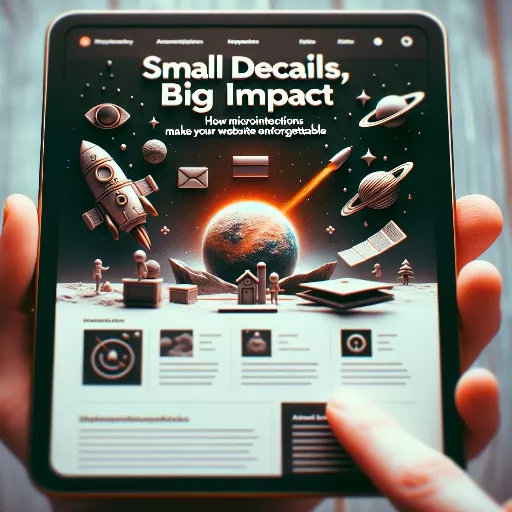
We all know that first impressions matter. This is one of the fundamental principles of web design. Besides the overall look of a website, even the tiniest details can make the user experience even better. Developers and designers constantly strive to add various microinteractions to a site to make it more attractive, user-friendly, and memorable.
Microinteractions are small animations, effects, or responses to user actions that enhance the interaction with a site. They make a website more dynamic, interesting, and intuitive. Although these elements might seem insignificant, they are often what users remember and what makes a site unforgettable.
One example of microinteractions that can make a site more appealing is animation when hovering over elements on a page. This could involve changing the color, size, or shape of an element, displaying additional information, or an animated effect. These small details can make the user experience more engaging and captivating.
Another example of an interesting microinteraction is scroll-triggered animation. As a user scrolls down a page, elements can appear or disappear with animation, making the browsing process smoother and more enjoyable. This effect helps to capture attention and retain users on the site.
Another way to utilize microinteractions is through form animations. When entering data into form fields, users can see various effects like color changes, icons, tooltips, or animated feedback on the inputted information. This makes filling out forms more engaging and helps prevent errors.
In addition to animations, microinteractions can also include sound effects. For instance, when a user clicks on a button, they might hear a sound signal confirming their action. This makes the interaction with the site more realistic and complete.
However, when using microinteractions, it's important to remember the basic principles of design. All elements should be balanced and not overload the user interface. Microinteractions should be subtle and not distract from the main content of the site. Moreover, they should be intuitive and align with the overall style and purpose of the site.
Microinteractions can make your site memorable and appealing to users. They help create a unique user experience and set your site apart from many others. By keeping in mind the basic design principles and smartly applying various effects, you can make your site even more attractive and interesting to visitors.


